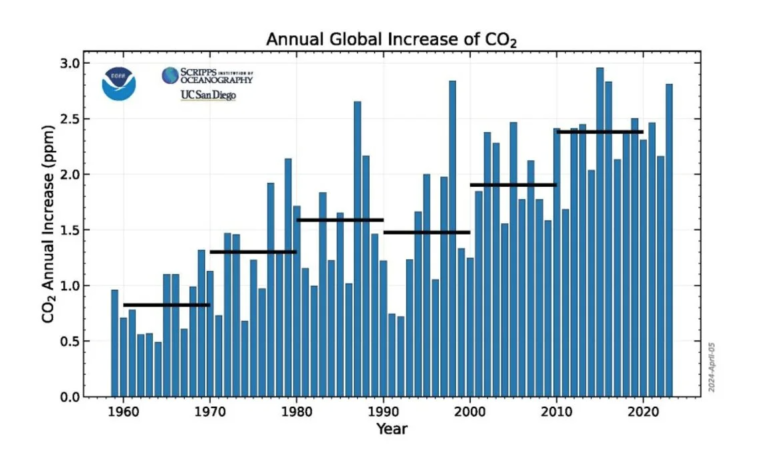Record CO2, CH4 and NOx in 2023: never so high the concentration of greenhouse gases in the atmosphere

NOAA data on greenhouse gas concentration in the atmosphere last year
(sustainabilityenvironment.com) – The concentration of greenhouse gases in the atmosphere reached new record levels in 2023 and shows no sign of slowing down. The leap year on year has been very significant for carbon dioxide (CO2), methane (CH4) and nitrogen oxides (NOx), the three main gases that trap heat in the Earth’s atmosphere. Although for none of the three was the largest increase in the historical series, their trajectory is in line with the acceleration observed in the last 10 years. The umpteenth sign that efforts to contain global emissions are not yielding results in line with those needed not to exceed 1.5 ºC.
All data on the concentration of greenhouse gases in the atmosphere 2023
The concentration of carbon dioxide reached 419.3 parts per million (ppm), an increase of 2.8 ppm over 2022. “The 2023 increase is the third largest in the last decade, probably the result of a continuous increase in CO2 emissions from fossil fuels, along with the increase in fire emissions, probably following the transition from La Nina to El Nino” said Xin Lan, a researcher who processed data provided by NOAA, the US National Oceanic and Atmospheric Administration.
2023 was thus the 12th consecutive year in which there was an increase in the annual average of over 2 ppm. Three years in a row with such large increases had never occurred before 2014, notes Noaa. We have been accumulating CO2 in the atmosphere at an unprecedented rate in the last 65 years for which there are direct and timely measurements.
The explosion in the concentration of greenhouse gases in the atmosphere also affected methane and nitrogen oxides. The CH4 reached 1922.6 parts per billion (ppb) with an annual increase of 10.9 ppb. This is the 5th largest increase ever. Between 2020 and 2022 methane had increased by 13.2-18 ppb. There is a short-term slowdown, therefore, but NOAA points out that the trajectory of the CH4 is still soaring after the plateau period ended in 2007.
Nitrogen oxides increased by 1 ppb to 336.7 ppb. It is the third-largest increase in the historical series after 2020 and 2021 (+1.3 ppb). “The increases in atmospheric nitrous oxide in recent decades are mainly due to the use of nitrogen fertilizers and manure resulting from the expansion and intensification of agriculture”, notes the NOAA.





